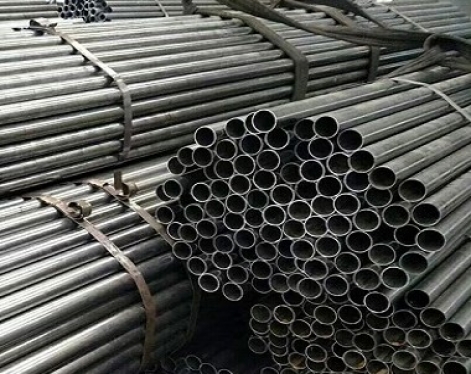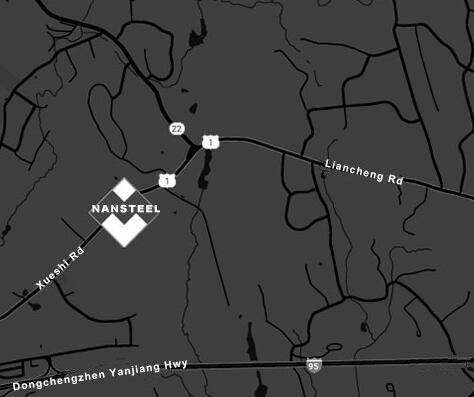Does "having holes" mean that the tube itself is hollow?
Yes, all steel pipes, including precision seamless steel pipes, are designed to transport fluids or serve as structural components, so they must be hollow with a hole (lumen or inner diameter) inside, which is the definition of pipe.
Does “porous” mean that there are defective holes on the pipe wall (such as pinholes, air holes, sand holes, etc.)?
Ideally, high-quality precision seamless steel pipes should not have any defective holes.
The reason why "precision seamless steel pipe" is called "precision" means that it has very high requirements in terms of dimensional accuracy, surface quality, and internal structural integrity. During the manufacturing process, manufacturers will adopt strict quality control measures and testing methods to ensure that the product is free of these defects:
Production process control: Precision seamless steel pipes are usually produced through cold drawing or cold rolling processes. These processes themselves can improve the surface finish and dimensional accuracy of the steel pipes, and the quality control of the raw materials (steel billets) is also very strict.
Non-destructive testing (NDT): Strict non-destructive testing is carried out during the production process, such as:
Eddy current testing: Detects surface and near-surface defects.
Ultrasonic testing: Detect internal defects, including pores, inclusions, cracks, etc.
Water pressure test/air tightness test: Verify the pressure resistance and sealing of the pipeline, and any leaks may be discovered.
Surface inspection: The internal and external surfaces are strictly inspected by visual inspection or automated equipment to ensure there are no defects such as pits, dents, scratches, etc.

Possible situations
Extremely small defects within the standard allowable range: Even for "precision" steel pipes, it is very difficult to completely eliminate all microscopic defects in industrial production. However, these micro defects must be within the minimum range allowed by relevant standards (such as China's GB/T 3639 "Cold-drawn or cold-rolled precision seamless steel pipes") and must not affect the performance and use of the steel pipe. For example, the standard may allow some tiny surface pits or scratches, but will never allow holes that penetrate the pipe wall.
Non-standard or low-quality products: If the products purchased are not produced by regular manufacturers, or are not strictly implemented in accordance with the standards, there may be holes caused by manufacturing defects (such as sand holes, air holes, or holes formed by the falling of inclusions). Such defective steel pipes do not fall into the category of "precision seamless steel pipes".
Conclusion
The "hole" of precision seamless steel pipe refers to its hollow structure as a pipe, but if it refers to defective holes, then high-quality precision seamless steel pipe should not have such defects. Its production and testing standards are to eliminate or control such defects to a negligible range that does not affect use. When purchasing, be sure to check the product's quality certificate (MTC) and various test reports.
Read more: Characteristics and Applications of Precision Seamless Steel Pipes
Yes, all steel pipes, including precision seamless steel pipes, are designed to transport fluids or serve as structural components, so they must be hollow with a hole (lumen or inner diameter) inside, which is the definition of pipe.
Does “porous” mean that there are defective holes on the pipe wall (such as pinholes, air holes, sand holes, etc.)?
Ideally, high-quality precision seamless steel pipes should not have any defective holes.
The reason why "precision seamless steel pipe" is called "precision" means that it has very high requirements in terms of dimensional accuracy, surface quality, and internal structural integrity. During the manufacturing process, manufacturers will adopt strict quality control measures and testing methods to ensure that the product is free of these defects:
Production process control: Precision seamless steel pipes are usually produced through cold drawing or cold rolling processes. These processes themselves can improve the surface finish and dimensional accuracy of the steel pipes, and the quality control of the raw materials (steel billets) is also very strict.
Non-destructive testing (NDT): Strict non-destructive testing is carried out during the production process, such as:
Eddy current testing: Detects surface and near-surface defects.
Ultrasonic testing: Detect internal defects, including pores, inclusions, cracks, etc.
Water pressure test/air tightness test: Verify the pressure resistance and sealing of the pipeline, and any leaks may be discovered.
Surface inspection: The internal and external surfaces are strictly inspected by visual inspection or automated equipment to ensure there are no defects such as pits, dents, scratches, etc.

Possible situations
Extremely small defects within the standard allowable range: Even for "precision" steel pipes, it is very difficult to completely eliminate all microscopic defects in industrial production. However, these micro defects must be within the minimum range allowed by relevant standards (such as China's GB/T 3639 "Cold-drawn or cold-rolled precision seamless steel pipes") and must not affect the performance and use of the steel pipe. For example, the standard may allow some tiny surface pits or scratches, but will never allow holes that penetrate the pipe wall.
Non-standard or low-quality products: If the products purchased are not produced by regular manufacturers, or are not strictly implemented in accordance with the standards, there may be holes caused by manufacturing defects (such as sand holes, air holes, or holes formed by the falling of inclusions). Such defective steel pipes do not fall into the category of "precision seamless steel pipes".
Conclusion
The "hole" of precision seamless steel pipe refers to its hollow structure as a pipe, but if it refers to defective holes, then high-quality precision seamless steel pipe should not have such defects. Its production and testing standards are to eliminate or control such defects to a negligible range that does not affect use. When purchasing, be sure to check the product's quality certificate (MTC) and various test reports.
Read more: Characteristics and Applications of Precision Seamless Steel Pipes









